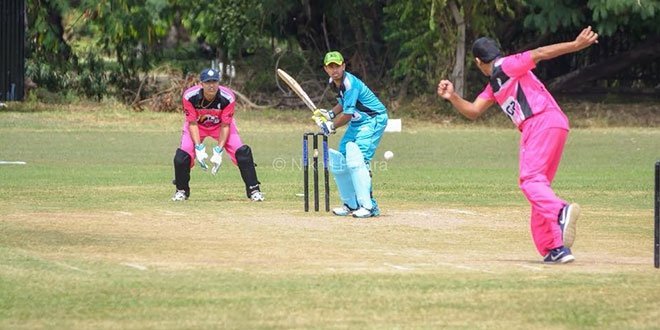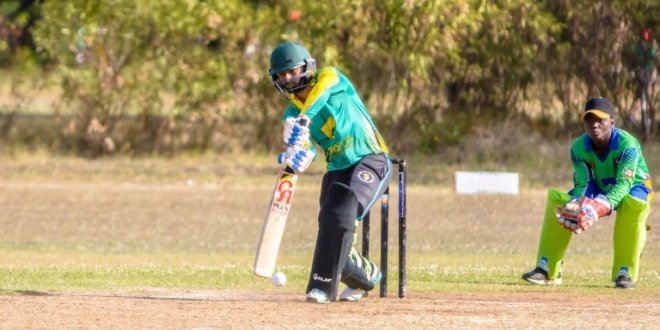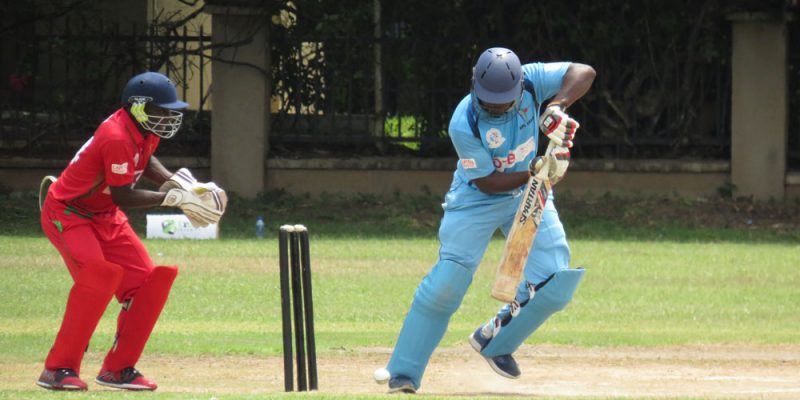In Tanzania and particularly in Dar es Salaam where cricket is played almost throughout the year, players take precautions by ‘reinforcing’ their cricketing paraphernalia with arm guard, shin guard, ‘abdominal’ guard not forgetting the helmet which comes in as a protective tool against the rising ball.
All across the cricket playing world cricketers fielding the length and breadth of the cricket ground also take measures to equip themselves with sunglasses which besides countering the glare of the sun also provide a shield against the ‘flood lights’ which are turned on to ‘light the way’.
A fieldsman in the deep who is about to catch the ball, with the arc lights flashing in the background, often finds the eye-glasses color coded as they may be providing him a comfortable avenue for warding off the disturbing light. In other words the sunglasses come in handy with the vision remaining focused.
While fieldsmen wear sunglasses as a matter of rule to protect their eyes from the glare, batsmen do not make the use of ‘shades’. Batsmen keep their vision unfettered. Batsmen believe that their eyes should behold the hand of the bowler who grips the ball, the release of the ball, the bounce of the ball and the seam of the ball as the ball comes in their direction without the aid of sunglasses.
It is a known fact that while batsmen do away with the practice of putting on sunglasses the fielders do not have any misgivings when using the sunglasses.
With temperatures ranging from 32 to 35 degrees centigrade these days those who play cricket believe that the sun has become hotter over the years.
Ayjaz Jessani who has successfully led the Aga Khan Sports Club for the past ten seasons or more says, “The heat effect is more intense. You have the burning and stinging of the skin. The heat is of a greater degree than what it was two or three years ago”.
Abhik Patwa who currently represents Tanzania as an opening batsman, states, “There is no doubt that the heat has escalated. Call it climatic change. With humidity and without the wind blowing across the ground the effect can be draining.”
Tanzanian cricketers visiting different countries in Africa or Europe or South – East Asia, besides familiarising with the geography of the places they visit, should acquaint themselves fully with their temperatures and safeguard themselves adequately against extreme heat or cold.
On January 23 this year in the first ODI between India and New Zealand at Napier’s Mclean Park Cricket ground, New Zealand had already batted. India had played 10 overs and were chasing the New Zealand target. There was a sudden stoppage of play that lasted about 30 minutes.
For the Indian cricketers this was something unique in that the glare of the sun with its dipping angle was directly sending its rays into the batsman’s eyes. In 2017 in the T20I between New Zealand and Bangladesh, the angular slant of the sun at about 7pm had made it unsafe for the batsman at the wicket to carry on, as a result of which the match was similarly held up.
This was also at McLean Park. Earlier on January 19 this year a Super Smash Match between Central Districts and Canterbury was also halted for some time for similar reason. Pete de Wet, the Central Districts Chief Executive told the New Zealand Herald,
“There’s nothing we can really do
Shaun George, the South African umpire officiating in the first ODI between India and New
The decision to go off the field was initiated jointly by the umpires and was commended by both sides. “There was an awareness of it by the players. They took everything in their stride without complaining”, said Shaun.
The batsman who was affected by the sun-strike that clearly obstructed his vision was Shikhar Dhawan, India’s ebullient opening batsman. The umpires immediately stepped in using ‘common sense’ to stop the match for a few overs. Kane Williamson, the New Zealand Captain said, “We haven’t had to deal with too many sun-strikes. But we know that in some of the domestic T20 games that had been the case.
When it happens it’s hard to move the sun and hard to move the grandstand. So we didn’t have any other option but to sit down for a while”. The spectators must have been hoping for some cloud cover at the moment of the sun-strike.
This works out to the disadvantage of all with the sun-strike bringing about temporary cessation of play. The on-field umpires in the first ODI between India and New Zealand took recourse to the following laws which govern the safety of players and umpires while the game is on.
Law 27.1 states: “It is solely for the umpires together to decide whether either
Law 27.2 goes on: “Conditions shall be regarded as dangerous if there is
Law 27.3 further clarifies: “Conditions shall be regarded as unreasonable if although posing no risk to safety, it would not be sensible for play to proceed”. The umpires
In Tanzania the sun is so bright it causes you to look away. The pupils of the eye constrict when exposed to such light. The cumulative effect of
There could be burns to the retina of the eye. It is the retina that makes a person’s vision possible by registering the images and coding it. There are situations such as the one described in Napier where the sun emits ultra violet (UV) radiation.
This radiation is invisible and comes in 3 main
These range from the Lense Category O, which are in reality fashion glasses not capable of providing protection against UV radiation. Category 4 lenses are special purpose sunglasses which provide a high level of sun glare reduction and dependable UV protection.
These cannot or should not be used while driving. Sunglasses
The Dar es Salaam Gymkhana Club cricket Section, in view of the torrid heat conditions, encourages the play of shorter formats viz. t20 and t10 amongst its members. This reduces the possibility of dehydration leave aside sun burns and sun-stroke. The application of creams to prevent the skin from being affected is in vogue.
The use of ‘electrolytes’ in fluids and water through and through the hot sessions of play are of immense help to prevent dehydration. ‘Bad light’ or ‘heavy rain’ are usually the ‘stumbling blocks’ which cause stoppage of play in Dar es Salaam. While sun-strokes affect players physically a ‘sun-strike’ as in a New Zealand sky to happen in Dar would be unimaginable.
However one cannot override the qualms of nature with ‘climatic aberrations’ surfacing in areas or places in uncanny geographical settings. “There are only two kinds of people who are really fascinating – people who know absolutely everything, and people who know absolutely nothing”.
While Oscar Wilde
For a Tanzanian Cricketer who plays in New Zealand at this time of the
Using fashion eyeglasses would be equivalent to flirting with grave danger. Ignorance cannot be bliss every time.



















Comments